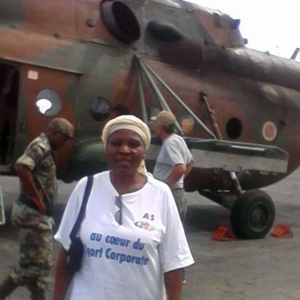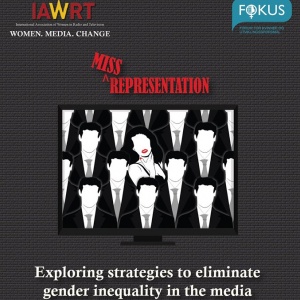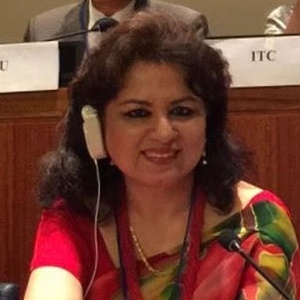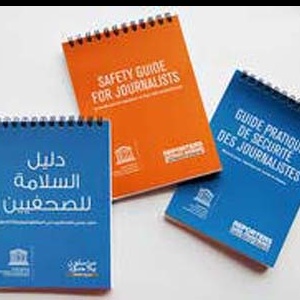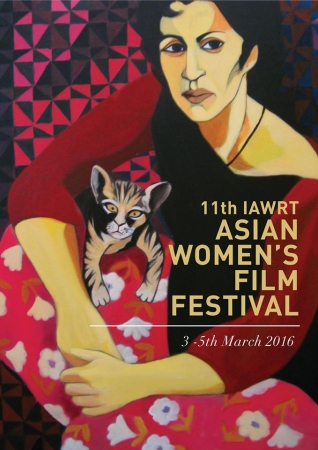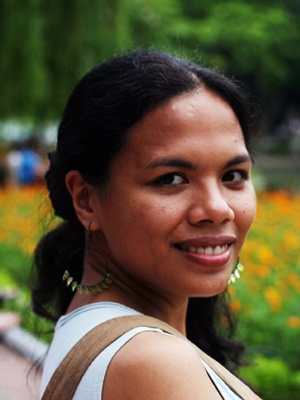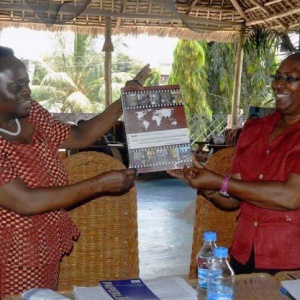Cameroon sits up north between two countries that have and continue to suffer terror attacks in Central and Western Africa – Nigeria and the Central African Republic. In Nigeria, the Boko Haram terrorist group has carried out many terrible atrocities since it started an insurgency in 2009. The group, recently named the world’s deadliest terrorist organisation, has killed about a thousand Cameroonians (Aljazeera quoting government and military sources) and chased away hundreds, especially those living in border towns. In January and February 2016, suicide bombers attacked markets in north Cameroon villages and towns, including Bodo, Mora the capital, Maroua, and most recently, Meme. The Cameroon military try to cope with the threat, awaiting final agreement on co-operative action by an 8,700-strong regional force involving Nigeria, Chad, Niger, Benin and Cameroon tasked with wiping out Boko Haram.
The dangers in those areas lead to the suspension of Female Genital Mutilation (FGM) project initiated by IAWRT Cameroon Chapter, which worked with communities to educate the custodians of traditional female circumcision about the dangers and health consequences of the practice. However reporters must still venture into the northern regions to report about the conflict and its effect on the lives of Cameroonians.
Pochi Tamba Nsoh, IAWRT international secretary and member from Cameroon had a chat with her fellow compatriot Aisha Mamah Shetu who works for the state broadcaster, Cameroon Radio Television – CRTV, in the region most affected by the terror group – the Far North Region.
1. How would you describe your daily life if a journalist in the capital, Maroua?
Challenging in a region witnessing recurring terrorists attacks
2. Does the possibility of being caught in a suicide attack worry you as you go reporting?
The possibility of being caught up in an attack in the field is always present, because we are at the war front and the enemy is invisible. But it doesn’t quench the desire to see and feel what is going on and report to Cameroonians anxious to know.
3 Maroua is a Muslim part of Cameroon. How easy is it for you to work there as a woman?
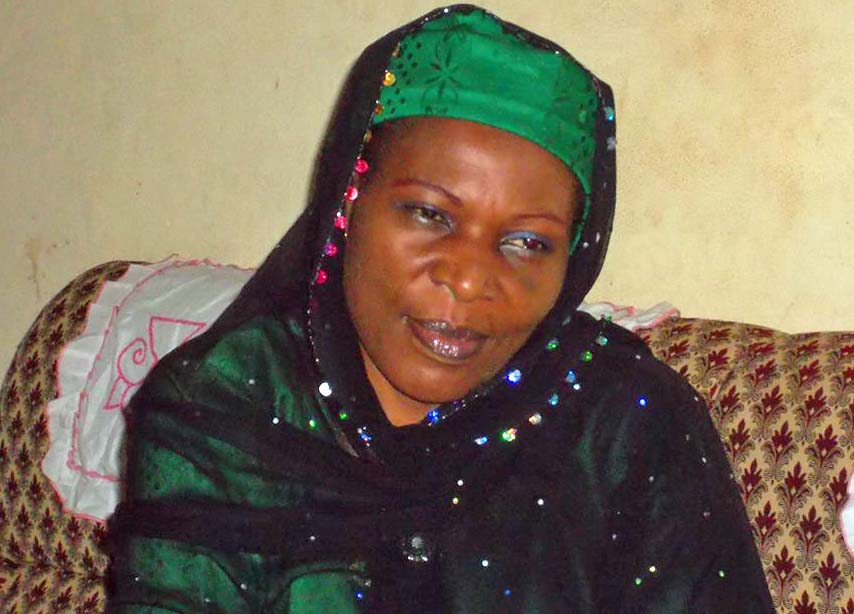 Maroua is both for Muslims and Christians, but the people are closely tied to their cultural values in a way that it is difficult to distinguish a Muslim from a Christian. Their dressing, food, etc. it is a tradition that has a very high esteem for a woman. A woman is mother, sister, wife – that goes with lots of respect. She is respected by all, consulted for major decisions in the family and she plays a central role in most organisation, but in a discreet manner. She will not mix up herself in public with men but her role is primordial.
Maroua is both for Muslims and Christians, but the people are closely tied to their cultural values in a way that it is difficult to distinguish a Muslim from a Christian. Their dressing, food, etc. it is a tradition that has a very high esteem for a woman. A woman is mother, sister, wife – that goes with lots of respect. She is respected by all, consulted for major decisions in the family and she plays a central role in most organisation, but in a discreet manner. She will not mix up herself in public with men but her role is primordial.
We are not actually afraid because we work under safe conditions, in the field we are mostly surrounded by different security units like the Rapid Intervention Battalion (BIR) gendarmes (police) and other military. But we always have in mind that another attack can occur anywhere anytime.
The terrorist group is the same, using different means to attain its goal, to attack to kill as many people as possible. Some of its tactics that keep changing are, suicide bombing, kidnapping, slaughter of people and cattle, burning down of villages, gunning etc
4. What do you and your colleagues fear most?
Many considered my transfer to this region, the Far North, as punishment, but to me it was a challenge and I love challenges for they give an opportunity to prove who you are and what you are capable of doing. It has been a wonderful experience for a woman like myself transferred to Maroua at the risk of terrorist attacks. As advice I will say working in a conflict zone is the same as reporting elsewhere, there is no “zero risk”, in life, just strictly follow security instructions to discover what pleasure it gives working in a conflict zone as a journalist. [email protected].
For a summary of the discussion on conflict reporting and gender issues at the IAWRT 36th Biennial involving Aunohita Mojumdar, who reported from Afghanistan for more than a decade, Yasmine Ryan who specialises in covering Tunisia, Liberia and Algeria chaired by Bibiana Peine, see the IAWRT Biennial report
Global media safety. #impunity
It would seem to be a reasonable assumption that reporting from conflict and war is the most dangerous form of journalism, but global statistics on almost 2, 300 media worker deaths in the last 15 years, show that this is not so. 25 years of contribution towards safer journalism, the 25th report on journalists and media staff killed since 1990 released on 3 February 2016, by the International Federation of Journalists (IFJ) reveals that more than 95 percent of media workers died in their own countries and in peace time.
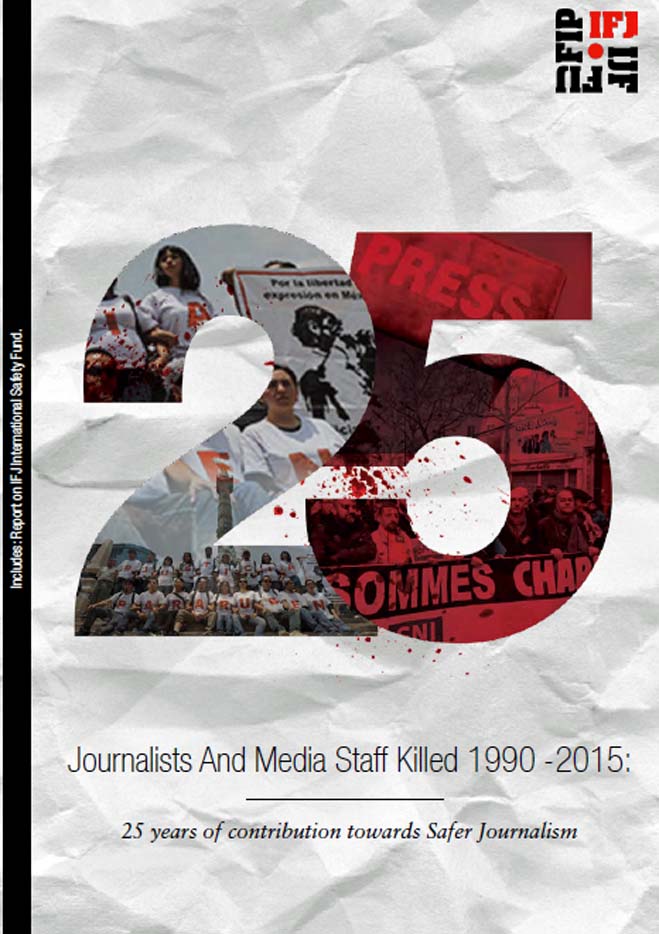 “Many of the murdered are local beat reporters whose names do not resonate in the media. These are different from by-lined war correspondents, who knowingly risk their lives, sometimes mistaken for combatants, get fatally caught in the crossfire, or walk on a land mine” said Jim Broumelha, President of the IFJ, at the conference, News organizations standing up for the safety of media professionals.
“Many of the murdered are local beat reporters whose names do not resonate in the media. These are different from by-lined war correspondents, who knowingly risk their lives, sometimes mistaken for combatants, get fatally caught in the crossfire, or walk on a land mine” said Jim Broumelha, President of the IFJ, at the conference, News organizations standing up for the safety of media professionals.
This observation is chillingly illustrated by the female death toll for 2015. Of the the six women who were murdered – all were local journalists. In the second most dangerous country for journalists to operate in, the Philippines, investigative journalist Melinda Magsino-Lubis was gunned down; in Somalia, Hindiyo Haji Mohamed, a journalist with the national television station SNTV, was killed by a car bomb; In South Sudan, Dalia Marko and Randa George were among five journalists and six others who were killed in an ambush near the Darfur region; in France, Charlie Hebdo contributor Elsa Cayat was among those murdered by gunmen who attacked their office, and in the US, Alison Parker was killed as she reported live on WDBJ7 TV along with her cameraman. And the lack of a strong civil sociaty allows the continuation of this sort of impunity. Jom Boumelha “no less than 75 percent were murdered outright, such as killed by a gunman escaping on the back of a motorcycle, shot or stabbed to death near their home or office, or found dead after having been abducted and tortured – murder has become the easiest, perhaps cheapest and most effective way of silencing troublesome journalists…. The killers of the vast majority of journalists are never brought to justice.”
Two issues arise from such global initiatives to end impunity against media, one is whether the use of death tolls obscures the greater threat to local journalists. Tolls are often used in road safety messages but the fact is that road accident injury rates are usually seven – ten times greater in number and cost to society, and the same is probably true for the media toll, deaths are not an accurate measure of the severity or consequences of violence against the media. As IAWRT Board member Abeer Saady says “it is very hard for a local journalist, more incidents are local and a lot are being left unreported. The harassment is very deliberate……. How can we protect the local journalists who work on the ground, even protecting them from the big [international] news agencies who employ them?
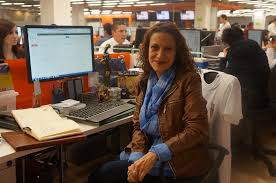 The second issue is that attacks on women, especially sexual harassment, have always been under reported. According to Mindy Ran the co-chair of the IFJ gender council, the decision to keep data on the women journalists killed, is: “in recognition of the many years of under-reporting of deaths and violence against women, and women journalists.” Zuliana Lainez, IFJ executive committee member, says “The overall figures for attacks on journalists can be misleading about the security risks facing women journalists.” It is a rare case when perpetrators are brought to justice, such as this month’s sentencing over the kidnap and torture of Colombian journalist Jineth Bedoya in Lima in 2000. Her awards include the 2001 Courage in Journalism Award of the International Women’s Media Foundation, and despite being abducted again in 2003, she continues to work as a journalist. (Jineth Bedoya pic: by Esther Vargas)
The second issue is that attacks on women, especially sexual harassment, have always been under reported. According to Mindy Ran the co-chair of the IFJ gender council, the decision to keep data on the women journalists killed, is: “in recognition of the many years of under-reporting of deaths and violence against women, and women journalists.” Zuliana Lainez, IFJ executive committee member, says “The overall figures for attacks on journalists can be misleading about the security risks facing women journalists.” It is a rare case when perpetrators are brought to justice, such as this month’s sentencing over the kidnap and torture of Colombian journalist Jineth Bedoya in Lima in 2000. Her awards include the 2001 Courage in Journalism Award of the International Women’s Media Foundation, and despite being abducted again in 2003, she continues to work as a journalist. (Jineth Bedoya pic: by Esther Vargas)
Again we return to the threats to local media women, Zuliana Lainez says “Depending on the culture and position of women journalists, the type of the threat to them may be different … Local women journalists also face a particular type of violence aimed at violating their private or family life. In some societies, all it takes to disqualify a newspaper’s report is to attack the journalist’s reputation.” The social media debate in India over sedition accusations against Delhi university students abound with sexualised accusations against women supporters of the students. The social media attacks on Indian TV journalist and columnist Barkha Dutt, as she describes it as an ‘Anti-National Sickular Presstitute’ are just one example of such gender specific personalised attacks.
An International Women’s Media Foundation global survey had almost two-thirds of 1,000 media women respondents saying they had experienced some form of intimidation, threats or abuse in relation to their work, ranging in severity from name-calling to death threats. It also found that most incidents of harassment and violence were never reported by women journalists because they fear being considered too vulnerable or too weak to do investigative work in the field. Now as media is increasingly availed from online sources, the threats to women are coming more out into the open. It is hardly reassuring that data collected by Demos, shows that female journalists experience roughly three times as many abusive comments as their male counterparts on Twitter.
In the 2015 UNESCO report Building Digital Safety for Journalists, online abuse of female journalists was pointed out as one of the main challenges in building digital safety. The Organization for Security and Co‑operation in Europe’s Representative on Freedom of the Media Dunja Mijatović convened an expert meeting in 2015 because of the danger of female voices online being silenced, “Female journalists and bloggers throughout the globe are being inundated with threats of murder, rape, physical violence and graphic imagery via email, commenting sections and across all social media platforms” she said.
New Challenges to Freedom of Expression: Countering Online Abuse of Female Journalists has a number of specific recommendations on how to best ensure that existing legal frameworks be used to support female journalists and prevent online harassment. Prominent amongst the recommendations is the need for employers to proactively support journalists being harassed online. Dunja Mijatović says she called on the OSCE participating States to declare, unequivocally, that any effort to silence women online must be regarded as a direct attack on our fundamental freedoms, while refraining from drafting new laws to restrict abusive speech on the internet, as they may have a chilling effect on freedom of expression. Along with a copy of those recommendations, the publication contains a number of essays from prominent journalists, academics and organizations recounting their experiences dealing with online threats against female journalists.
Whether impunity is in abusing or threatening media, especially women, online or in actual violence, as the IFJ President Jim Boumelha says impunity, “occurs when there is the absence of political will to back the investigations.“ He warns that while there are numerous instruments adopted by the UN, most are non-binding; “the major hindrance for the protection of journalists derives not from the scope of the rights but from implementation deficits”. And today’s sad reality is that not many journalists can rely on international institutions to defend their rights when they disappear or are jailed or murdered.”
In the meantime, there are tens of thousands of male and female journalists around the world who utilise the democratic space which is available to tell the stories which empower and matter.
by Nonee Walsh
Resources:
http://www.world-psi.org/uncsw/news/unesco-safety-women-journalists
http://www.globaleditorsnetwork.org/press-room/news/2015/12/digital-safety-for-women-in-journalism/
http://www.demos.co.uk/research-area/centre-for-analysis-of-social-media/
“Building Digital Safety for Journalists”
http://www.unesco.org/new/index.php?id=128261
http://www.rferl.org/content/rferlive-role-of-women-in-global-media/27490599.html
The 60th session of the Commission on the Status of Women (CSW) is being held in New York from 14 to 24 March 2016. IAWRT’s parallel event, Gender inequality in the media: Exploring strategies for change, will be held at 12.30, on March 17 2016.
Civil society is given the opportunity to participate in the NGO CSW Forum, which is organized by NGO CSW/NY, independently from the United Nations. It includes a Consultation Day, Reception, and the Parallel Events.
The priority theme of this year’s CSW is ‘Women’s Empowerment linked to the Sustainable Development’s Goals’ (SDG’s). The review theme is ‘The elimination and prevention of all forms of violence against women and girls’ (agreed conclusions from the fifty-seventh session). The focus of the CSW will be on the review and appraisal of the implementation of the Beijing Declaration and Platform for Action, and the recent adoption of the Addis Ababa Action Agenda and the 2030 Agenda for Sustainable Development for realising substantive gender equality, women’s rights and empowerment. An outline of how CSW will work and draft conclusions and resolutons here.
IAWRT’s parallel event will be held on March 17, 2016 at the Church Center for the United Nations (CCUN) – 777 UN Plaza (44th St. & 1st. Ave) New York.
IAWRT Board members are preparing and presenting a session which will focus on the lack of global progress in making women more than 24% of news sources – the same as five years ago. In many countries, women remain underrepresented or even invisible in the news and better access to and portrayal of women in the media is a critical stepping stone in securing equal rights. But how do we change the media mechanisms of effectively silencing women? Through concrete examples the world’s oldest organisation for media women, IAWRT, will explore new thoughts, perspectives and strategies for giving women an equal voice and thus ensure gender equality in line with the SDGs.
The full parallel event schedule to the NGO CSW forum can be downloaded here.
By Nonee Walsh
IAWRT member, Bandana Rana is thrilled by the recognition of her decades of activism on women’s rights in Nepal by being honoured as a ‘Women of Distinction’ by the NGO Committee on the Status of Women, New York (CSW/NY).
A long term leader in the Nepal women’s movement, she has spent decades in voluntary activism, promoting women’s rights through local, national and international organisations. She says she has made a point of attending the Commission on the Status of Women (CSW) over the last decade, to “take the voices from the community into the global arena, as CSW is an important arena for creating policies.” CSW/NY noted her efforts “to bring the local level to the various UN processes (Beijing Review, CEDAW, UNSCR 1325, ICPD and SDGs)” and Bandana Rana says she is “thrilled that the committee has recognised me.”
Ms Rana worked for 20 year in Nepal Television and founded Sancharika Samuha (Forum of Women in Media) and was the first woman on Radio Nepal’s board of directors and the National Press Council Board as well as the inaugural Chair of the IAWRT Nepal chapter. She now devotes herself entirely to activism. She headed the IAWRT Nepal Chapter from its inception in 2006-7 until 2015, and was a member of the international board and an IAWRT Vice President.
 As CSW/NY says, Ms Rana is a passionate advocate of the UN Security Council Resolution which addresses the massive impact of war on women and the pivotal role women should play in conflict resolution (UNSCR 1325). After a decade of conflict in Nepal ended, IAWRT Nepal under her leadership hosted a national conference in 2006, ‘The Role of Media Women in Post Conflict Reconstruction’ and organised an international conference, ‘Women Building Peace: Sharing Experiences and Challenges’ in December 2007. Members also produced documentaries on women’s participation in the Constituent Assembly and on the Domestic Violence Act in a post conflict scenario, as well as joining with other with other media organisations to conduct orientation for journalists on UNSCR 1325.
As CSW/NY says, Ms Rana is a passionate advocate of the UN Security Council Resolution which addresses the massive impact of war on women and the pivotal role women should play in conflict resolution (UNSCR 1325). After a decade of conflict in Nepal ended, IAWRT Nepal under her leadership hosted a national conference in 2006, ‘The Role of Media Women in Post Conflict Reconstruction’ and organised an international conference, ‘Women Building Peace: Sharing Experiences and Challenges’ in December 2007. Members also produced documentaries on women’s participation in the Constituent Assembly and on the Domestic Violence Act in a post conflict scenario, as well as joining with other with other media organisations to conduct orientation for journalists on UNSCR 1325.
While Bandana Rana agrees that people can become cynical, even critical, of the United Nations, she feels that such instruments “provide a mandate to lobby and pressure government on policies which might affect us. If we did not have resolution 1325, we would not have the 2011 national action plan which mandated women’s involvement in the peace building process.” CSW/NY says Bandana Rana was “the key architect in the drafting of the National Action Plan”.
Ms Rana says local women may not be bothered by UN mandates, but engaging civil society in the consultation process over the peace plan meant “they now have a voice and are able to demand their meaningful role in the peace building process.”
She has also worked tirelessly at the local, national and international level campaigning to end violence against women. In Nepal she founded the National Network Against Domestic Violence and co-founded Saathi, an NGO that works on preventing violence against women and girls through partnerships and collaborations. For example, Bandana Rana says one of its important initiatives has been the collaboration with the Police force to build trust in police so that survivors of violence can pursue justice with confidence. She is the team leader of the program Astha (meaning building trust) –”Addressing Social barriers That Hamper the Advancement of Women being implemented in 8 of the rural districts of Nepal.
The devastating Nepal earthquakes in 2015 which killed 9000 and injured 23,000 people also destroyed the homes of hundreds of thousands of Nepalese has made Ms Rana’s work harder (partly because she 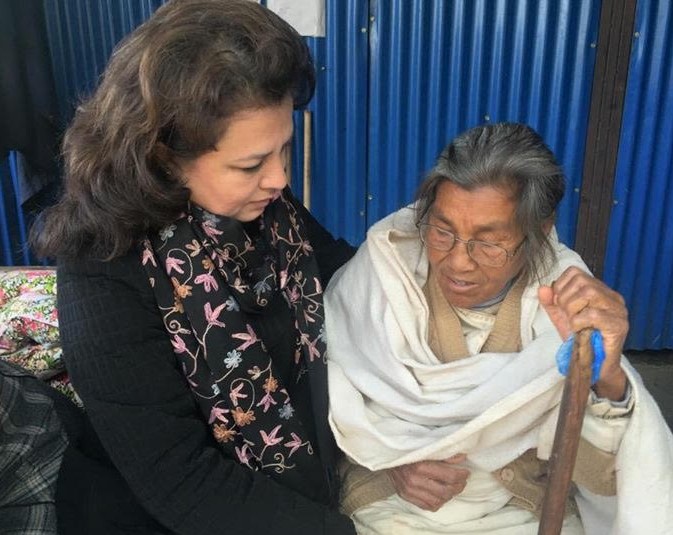 lost staff to international aid organisations offering higher salaries) but she is not daunted. “We have reached out to women traumatised by loss of family, and lack of food security, delivered first aid and healing.”
lost staff to international aid organisations offering higher salaries) but she is not daunted. “We have reached out to women traumatised by loss of family, and lack of food security, delivered first aid and healing.”
“Recovery takes a long time, and we are making sure that gender perspectives are incorporated in the technical committee overseeing recovery. We developed a women’s charter and took it to many ministers including the Prime Minister.”
A particular issue for women and children is the vulnerability to sexualised violence which comes with a loss of family and the lack of privacy in sleeping in open tents and using communal latrines. Women’s groups such as Saathi set up, or lobbied for temporary safe places for women. When traffickers stated taking advantage of unprotected females, they organised watch posts so that there could be interventions if women or girls were in danger.
Bandana Rana will move from traumatised Nepal back into the global spotlight in early March 2016 when she delivers the keynote address at the Consultation Day held by CSW/NY, on the eve of the 60th session of the Commission on the Status of Women.
However, she will not be moving far from the passions which have long motivated her. “We must reach out to women on the ground being threatened by, or surviving sexual violence – and keep asking, are the campaigns really reaching out to the people we are working for.”
 $10,000 in cash prizes on offer for feature documentary and narrative films for the WVN 2016 online file festival. Entries deadline is March 8, 2016 at 11:59PM PST. The 2016 Women’s Voices Now, Online Film Festival aims to portray diverse and under-reported stories of (self-identified) women and men supporting women. Subjects broached in this festival include women in politics, social and legal change/justice, political rebellion, women’s rights struggles, and more. All films in any language other than English are encouraged to be submitted; however, those films must include English language subtitles. Details here. There is a $20 submission fee for all films.Farsi/Dari,Chinese,French,Spanish
$10,000 in cash prizes on offer for feature documentary and narrative films for the WVN 2016 online file festival. Entries deadline is March 8, 2016 at 11:59PM PST. The 2016 Women’s Voices Now, Online Film Festival aims to portray diverse and under-reported stories of (self-identified) women and men supporting women. Subjects broached in this festival include women in politics, social and legal change/justice, political rebellion, women’s rights struggles, and more. All films in any language other than English are encouraged to be submitted; however, those films must include English language subtitles. Details here. There is a $20 submission fee for all films.Farsi/Dari,Chinese,French,Spanish
A new edition of the ‘Safety Guide for Journalists: a handbook for journalists in high-risk environments’ is available. The guide says that violence against female journalists is a “double attack” on their sex as well as their profession. Throughout the guide there are practical tips for women in the field.
The 130-page guide compiled by Reporters Without Borders in association with UNESCO offers essential information and practical advice for journalists to assist them before, during and after an assignment in dangerous areas. This publication comes in a context of developing threats against media professionals, with more than 700 journalists killed in the past decade for reporting the news. In 2015, more than 105 journalists were killed, while many more were threatened, imprisoned or kidnapped for simply doing their work of bringing news and informing to the public.
The latest edition was launched on 5 February 2016 at the conference News organizations standing up for the safety of media professionals in Paris.“The Guide is an important body of knowledge and experience acquired over the years by journalists, news organizations and groups that campaign for freedom of expression,” according to Guy Berger, Director of the Division of Freedom of Expression and Media Development at UNESCO.
The Safety Guide for Journalists contains a wide range of essential information to enhance the safety of journalists. It stresses the importance of well-prepared planning before taking assignments in dangerous missions and gives essential tools for journalists. The guide is useful for all those who work in news and information and who report from hostile environments, such as conflict zones, violent demonstrations, riots and terrorist attacks.
The first edition of the Safety Guide for Journalists was produced in 1992. Since then, it has been updated and translated into several languages and widely distributed. The new version, available in Arabic, English French and Spanish and, addresses new threats and challenges to an increasingly dangerous profession. The newly added chapters highlight the issue of digital safety, a growing worry for journalists, and elaborate on safety precautions for those covering natural disasters or epidemics. They also address the problem of sexual violence, aimed particularly at female journalists.
Journalists and news organizations are essential actors for the exercise of freedom of expression, making them targets for those who want to impose tight control on public debate and citizens’ right to information. With the new edition of the Guide, Reporters Without Borders and UNESCO continue their work within the UN Plan of Action on the Safety of Journalists and the Issue of Impunity. Aimed at creating a free and safe environment for journalist and media workers, the UN Plan of Action was adopted the in April 2012 and confirmed by the UN General Assembly in November 2013. The publication of the new edition of the Safety Guide for Journalists was supported by Sweden
The Safety Guide for Journalists – A handbook for reporters can be accessed online in Arabic, English, French and Spanish.
Source: UNESCO.
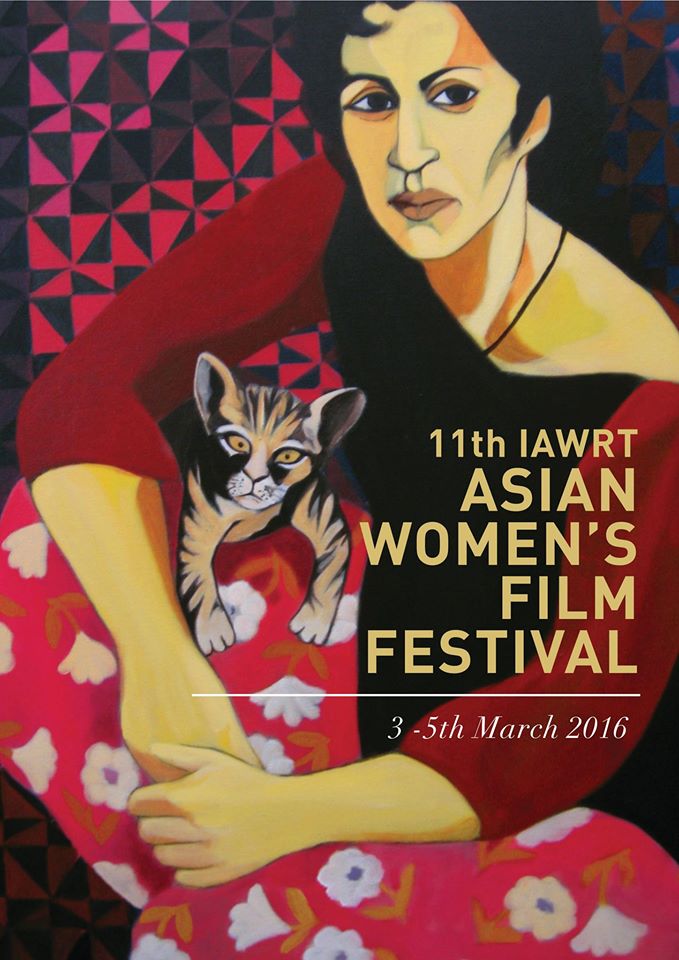 The IAWRT Asian Women’s Film Festival will be held from 3 – 5 March 2016, in New Delhi. Curated by Umadevi N.Tanuku and Aradhna Kohli, it showcases works by women directors of Asian origin, and shows work ranging from animation, to documentary, experimental, short fiction and fiction features.
The IAWRT Asian Women’s Film Festival will be held from 3 – 5 March 2016, in New Delhi. Curated by Umadevi N.Tanuku and Aradhna Kohli, it showcases works by women directors of Asian origin, and shows work ranging from animation, to documentary, experimental, short fiction and fiction features.
It is held every year around International Women’s Day
The festival was launced in 2005 and has grown in strength and popularity with film makers coming from all over the world to participate. The festival has travelled to many Indian cities and selections have been screened at other festivals like Birds Eye View Film Festival 2011, London, International Documentary and Short Film Festival of Kerala 2011 and Vasakh Festival, Lahore 2012.
By Nonee Walsh
Long serving IAWRT member Elisabeth Kirkby has passed yet another milestone in her full and productive life, celebrating her 95th birthday with her family, north of Sydney, Australia, on January 26th 2015. Lis has forged several dynamic careers since the 1940’s, as an actress, broadcaster, politician and farmer and she recently completed her doctoral thesis
Lis kirkby has been a member of the IAWRT since the early 1960’s and served on the international board from 1972 and as President from 1976 -1980.
Lis’s radio career began In Malaysia, where she lived during the uprising dubbed the ‘Malayan Emergency’, rising to become head of the Talks and Features Unit of Radio Malaysia in Kuala Lumpur. Some IAWRT members were fortunate to be on a tour of Kuala Lumpur with Lis in 2011, when she pointed out the balcony where, in 1957, she worked on the radio broadcast of the handover of power from the British. Lis also pointed out the site of a theatre company she helped establish, and reminisced about using the equipment now housed at the Radio Malaysia Museum.
 In 1965, she was employed by the Australian Broadcasting Commission, when it had only just begun to allow married women to remain in the workforce. Lis worked in the Schools Division, and as a light entertainment producer. In 1966, she became the first on air presenter of a daily women’s programme, ‘Morning Call’. Lis says “The programme was fully-scripted, remarks were not permitted and the interviews were devoted to cooking, children’s health, books and sometimes a discussion with a prominent woman. Current affairs, politics were banned”. However, political activism has always been a part Lis’s life. Lis opposed the Vietnam War and Australia’s involvement, from the 1960’s, and was an early member of Australia’s second-wave feminist organisation, the Women’s Electoral Lobby, as well as numerous other women’s and human rights groups.
In 1965, she was employed by the Australian Broadcasting Commission, when it had only just begun to allow married women to remain in the workforce. Lis worked in the Schools Division, and as a light entertainment producer. In 1966, she became the first on air presenter of a daily women’s programme, ‘Morning Call’. Lis says “The programme was fully-scripted, remarks were not permitted and the interviews were devoted to cooking, children’s health, books and sometimes a discussion with a prominent woman. Current affairs, politics were banned”. However, political activism has always been a part Lis’s life. Lis opposed the Vietnam War and Australia’s involvement, from the 1960’s, and was an early member of Australia’s second-wave feminist organisation, the Women’s Electoral Lobby, as well as numerous other women’s and human rights groups.
Lis became a household name in Australian in the 1970’s with role of Lucy Sutcliffe in a high rating soap opera called Number 96 . It was a programme about daily lives, but was ground breaking as it dealt with sexuality, breast cancer, reproductive issues and homosexuality. (My parents considered it to be too riské for me to watch – I had to find out at what was happening from high-school friends).
She continued theatre and television acting and entered politics. She was the Australian Democrats New South Wales state leader for many years, elected to the New South Wales Parliament upper house, serving from 1981-1998, and for several years part of a group which effectively held the balance of power over government legislaton. She campaigned to decriminalise homosexuality, to improve workers’ rights, conditions for Aboriginal and Torres Strait Islander people, and to establish equal rights and opportunities for women.
After that Lis became a sheep grazier in a town called Temora and served in local government. In 2012 she was awarded the national Medal of the Order of Australia, for “…service to the Parliament of New South Wales, to the community of Temora, and to the performing arts.
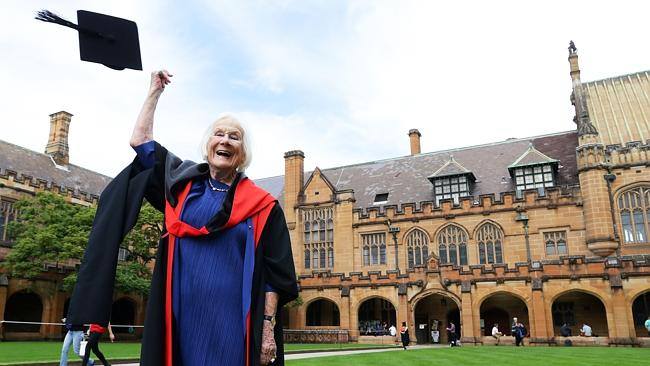 Between 2002 and 2014 Lis completed her bachelor of arts and then doctoral studies at The University of Sydney, becoming Australia’s oldest university graduate. Dr Kirkby’s PhD thesis, was entitled Will we ever learn from history: the impact of economic orthodoxy on unemployment during the Great Depression in Australia. Of her thesis, she said: “I am more and more involved in this thesis as a matter of putting forward what I believe are principles of social justice, and it is not some airy fairy idea of total equality. There’s no such thing as total equality, but a progressive society has to be fair, and it is not fair when a financial firm in New York can make a profit that is greater than the gross domestic product of a small country.” Thesis is Available here
Between 2002 and 2014 Lis completed her bachelor of arts and then doctoral studies at The University of Sydney, becoming Australia’s oldest university graduate. Dr Kirkby’s PhD thesis, was entitled Will we ever learn from history: the impact of economic orthodoxy on unemployment during the Great Depression in Australia. Of her thesis, she said: “I am more and more involved in this thesis as a matter of putting forward what I believe are principles of social justice, and it is not some airy fairy idea of total equality. There’s no such thing as total equality, but a progressive society has to be fair, and it is not fair when a financial firm in New York can make a profit that is greater than the gross domestic product of a small country.” Thesis is Available here
Speaking to Sydney University staff after that latest achievement, Lis said “It really is infuriating that people assume you can’t do something because of your age.” See TV report here.
IAWRT wishes Lis well for the future, and as she says “there is always something to do”, we are in no doubt that we will be hearing from her again soon.
Sources
Name: Ilang-Ilang Quijano
Location: Philippines
What do you do?
I am a journalist-filmmaker working in alternative media in the Philippines. I sit on the National Council of Altermidya (People’s Alternative Media Network), a national network of independent and progressive media outfits and institutions. Right now, I am involved in multimedia production (all stages of production from conceptualization, scripting, shooting and editing) and write feature and opinion articles for the Altermidya website. I am also involved in Altermidya’s training programs on video for social change, community radio, and citizen journalism. I am also a documentary filmmaker.
Why did this type of work interest you, and how did you get started?
I started in journalism writing for our student publication at the University of the Philippines, Manila. As a student journalist, I co-wrote an article with my father, a doctor, on the effects of aerial spraying of pesticides in a community in Southern Philippines. The article was published in a national newspaper, and we got sued for libel. Click for more details. The case got me interested in writing about social issues. My first job was in 2002 as a reporter for Pinoy Weekly, a start-up weekly print newspaper that catered to marginalized communities of workers, urban poor, migrants, indigenous peoples, women and youth. As it was independent media, I got to write freely on human rights, the environment, land rights, women’s rights, public policy and other pressing social issues. I eventually became the Executive Director of Pinoy Media Center, the publisher of Pinoy Weekly, and also ventured into documentary filmmaking, multimedia production, and citizen journalism training.
I received my Master’s degree in journalism as a fellow of the Konrad Adenauer Asian Center for Journalism. I am a past director of the National Union of Journalists of the Philippines. More recently, I studied documentary filmmaking through the Goethe Institute in Manila and Jakarta and got to participate in various film festivals in the Philippines and abroad. Right now I am also a board member of the IAWRT -Philippines Chapter.
What part of this job do you personally find most satisfying? Most challenging?
The work is satisfying because you see and feel the enthusiastic responses of communities whenever we report or highlight their issues and concerns, which are mostly misrepresented or underreported by the corporate mainstream media. You become part of their empowerment. The most challenging thing is always the lack of income — as sustainability is always an issue in independent and non-profit media. Threats of harassment and censorship are also very real in the Philippines, and always a challenge, especially for alternative media practitioners.
What do you like and not like about working in this industry?
I like the editorial independence and freedom in alternative media to report on issues that matter, and in ways that can lead to empowerment and social change. I like the fact that I can be enterprising, choose my own stories, and even contribute to other news outfits or look for other producers and partners for documentaries I’m interested in doing. The multimedia landscape is also very exciting—the technology to create powerful documentaries, web series, and other multimedia works is now more accessible, and there is a wide variety of forms that one can use, and experiment with, for storytelling.
What I do not like about the media industry is that in general, it does not pay well for independent journalists or even for its own employees. (That is why we work, not just on press freedom issues, but for the welfare of journalists as well.) I also do not like the fact that producers and editors are also frequently looking for content that “sells” and not necessarily content that matters.
What are your long-term goals?
My long-term goal is for the alternative media in the Philippines to flourish even more, especially in the provinces where it is badly needed by poor or marginalized communities. Personally, my goal is to train and educate more independent media practitioners and to help in establishing alternative media outfits. I’d also like to produce or direct more compelling and creative documentaries, and to write more narrative and investigative reports on issues that are close to my heart.
What special advice do you have for a student seeking to qualify for this position?
My advice to students is to be enterprising in their stores and not be inhibited by the traditional news beat system, or reporting solely within the confines of the corridors of power—which mostly manipulate the news agenda. Go to non-traditional news sources, seek out communities and people in their daily lives, and find out how public policies or social phenomenon affect them. Always be critical. Get to know the people you are covering as intimately as possible. As much as possible, give voice to the voiceless; afflict the comfortable and comfort the afflicted. For women journalists, my advice is that every issue affects women in special ways: find out how and you will have a story, most likely one that can only be told by a woman.
Do you have any special words of warning or encouragement as a result of your experience?
There is this quote that was used by student publications during the period of Martial Law in the Philippines; I think that it is still relevant today: “In the midst of a deafening cry for change in a society beset with inequalities, journalism cannot find a neutral sanctuary. Either it contributes to the prolonging of the night, or helps in the ushering of a new dawn. After all, to write is already to choose.”
These are my strongest assets/skills, areas of knowledge, personality traits and values are….
Aggressiveness, compassion, creativity and critical mindedness
Links to your media projects
Documentary: “Heart of the City” tells about the life-and-death struggle of Manila’s urban poor settlers whose homes are about to be demolished.
Watch here:
Documentary Trailer: “Daughters of Cordillera” tells the story of Piya, a young activist, who visits her hometown in Bontoc, Mountain Province, to reconnect with her indigenous roots. Watch here:
Various AlterMidya multimedia productions. Watch here:
An opinion piece on human rights reporting published by the Center for Media Freedom and Responsibility. Read here:
An investigative narrative report on a mining-affected community published in Pinoy Weekly. Read here:
By IAWRT-Tanzania Chapter
The Report on Gender Equity and Social Justice in Public Media, compiled from monitoring by chapters of the International Association of Women in Radio and Television (IAWRT), has shown that women and girls are not engaged fully as sources of information or in decision making bodies at different levels compared to male counterparts.
The Report on Gender Mainstreaming Monitoring in the Tanzania Broadcasting Corporation (TBC) further said that the gender inequality gap that exists between men and women denies women’s rights to enjoy different opportunities, including wages.
At the official launch of the report in Dar es Salaam, the guest of honour and Executive Director of the Tanzania Media Women’s Association (TAMWA), Edda Sanga (pictured with head of IAWRT Tanzania Rose Haji Mwalimu) called on the government to abide by the Beijing Platform Declaration on the advancement of women and the South African Development Community (SADC) Protocol on Gender and Development, to ensure women are engaged at all levels of decision making bodies in order to bridge the existing gap and enhance the development of the country.
Sanga however, called on women themselves to be aggressive and united, to ensure that the gender equality agenda is pushed through by a common voice. Those who are already at top of the ladder should ensure they get down and uplift the status of others, especially those at grass roots level.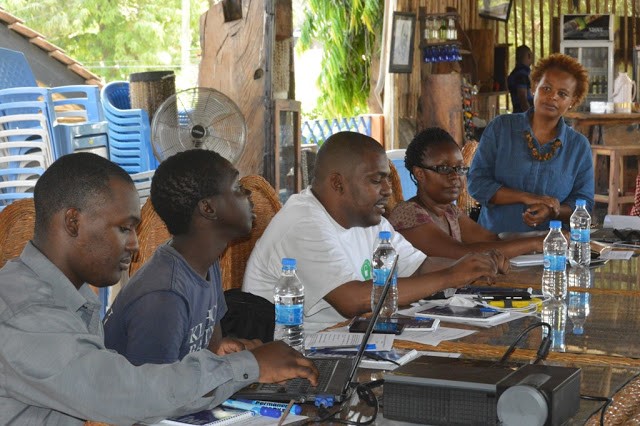
Rose Haji Mwalimu said women also need to be self-aware and value their contribution to the community. She said a failure to do so will reinforce the existing gender gap between men and women. Despite the burden women carry and the contribution women make in the community they have been denied their right to hold top positions at workplaces and do not access media information.
As a way forward, participants to the launch came up with a collaborative strategy to popularize the report nationally, internationally and in the local community. One strategy is to circulate the report widely to different stakeholders, to include the report in different workshops and seminars and to translate the report into Kiswahili for the community to understand the relevance of the contents to them.
Another strategy is to hold discussions in and around electronic media and to use social media platform as well as the existing websites of partner organizations like TAMWA and others to publize the report.
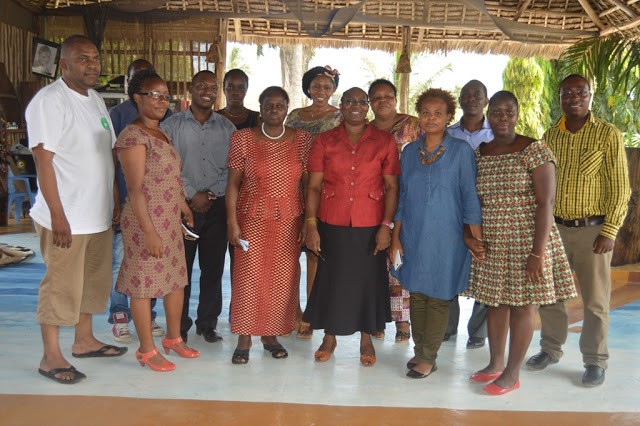 Such engagements will influence journalists to be more engaged with gender issues so they can mainstream gender into their daily undertakings and influence media owners and media decision makers to create interest in gender issues. (Pictured left Razia Mwawanga, IAWRT – Tanzania Treasuer Chapter and director of the programme, leads discussion).
Such engagements will influence journalists to be more engaged with gender issues so they can mainstream gender into their daily undertakings and influence media owners and media decision makers to create interest in gender issues. (Pictured left Razia Mwawanga, IAWRT – Tanzania Treasuer Chapter and director of the programme, leads discussion).
The Tanzania workshop also included the screening of the ‘Reflecting Her’ an IAWRT produced documentary on reproductive health in a number of countries.
The workshop is part of IAWRT’s ongoing project on gender mainstreaming, which includes holding fact-based events aiming to inform media parctitioners, to reverse the lack of progress in making gender issues central to media output. Workshops continue at the local level and in global forums, principally through side events at the Commission on the Status of Women.

